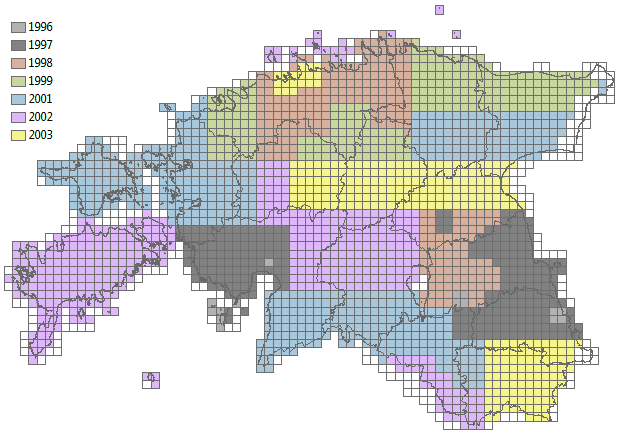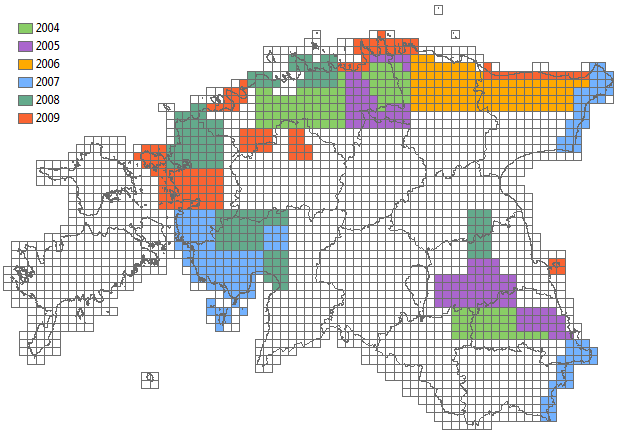History of Estonian Basic Map Project
The fundamentals of the Estonian Basic Map Project were developed and approved in 1991. As source materials aerial photographs, fieldwork materials, existing cartographic and statistic data were used. Contractors were chosen through public tendering procedure.
Digital vector and raster map 1:10 000, first revision 1994-2003
The vector map was completed as a result of stereomapping and extensive fieldwork with digital processing of already available information. The digital vector map consisted of forementioned tiles, which included 3-4 files each with different information in MicroStation DGN format. All already completed vector maps contained a file with topographic information (points, lines, texts) and a map frame file (frames, coordinate grids, frame texts). Since 1999 a file with closed areas was included as well.
Mainly considering the needs of the land reform and land cadastre, the Land Board produced also a raster map from the vector map in black-and-white and since 2003 also in colour (GeoTIFF and ECW formats).
By the end of year 2003 almost 100% of the Estonian territory was covered by the digital Estonian Basic Map. Only a narrow corridor along the Estonian-Russian border remained to be mapped. Thus, the Land Board had reached one of its major milestones.

Starting of the next revision in 2004
In 2004, the Land Board started the revision of the Estonian Basic Map. During that year 3147 sq km were updated, in 2005, 2325 sq km, in 2006, 2550 sq km and updates were completed on 1900 sq km in 2007.
Since 2004 the Estonian Basic Map has been available also in MapInfo format. For customers a special workspace for cartographic visualization of the Estonian Basic Map in MapInfo environment was designed.
In 2006 the Land Board started to convert the file based Estonian Basic Map data (in DGN format) into object-oriented geodatabase (Oracle + ESRI SDE) - Estonian Topographic Database (in Estonian ETAK - Eesti Topograafia Andmekogu).
Since 2009 the map in whole has been generated once a year from the topographic database dump. Some minor cartographic enhancements are made to the data to generate raster versions.
The Basic Map has also a legal role, e.g. pursuant to Estonian environmental legislation, the boundary of a water body indicated on the map serves as a baseline for restriction zones of shores and banks.
